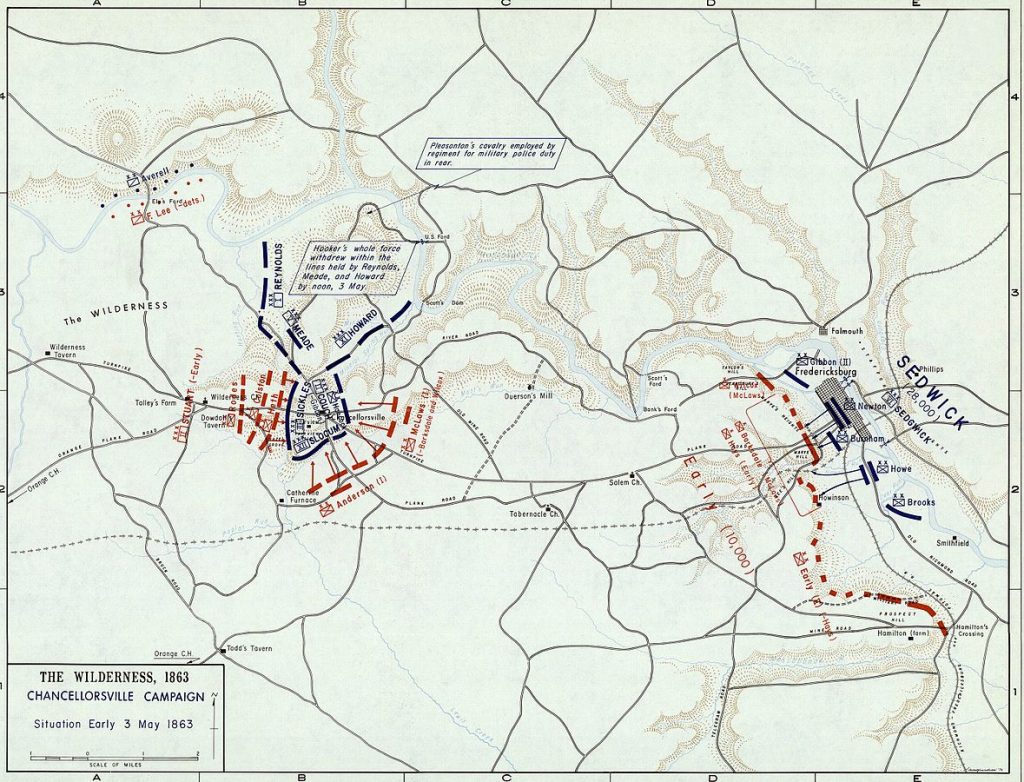Second Fredericksburg: “What A Picture!”
A few weeks ago, I was working on a project at work for the Second Battle of Fredericksburg. It’s inspiring to think that attacking troops actually did capture Marye’s Heights—but on May 3, 1863, not December 13, 1862. Since the plain in front of Marye’s Heights had been the scene of such terrible slaughter in the First Battle of Fredericksburg, the capture of the heights during the Chancellorsville Campaign had multiple meanings and inspiration for the troops to accomplished or witnessed it.
Sergeant W. R. Johnson of the 15th Massachusetts Infantry penned the following excerpt, and I’m still waiting for someone to paint the scene:
At the time of the Chancellorsville fight we did not go with the rest of the corps, but the division, under command of General Gibbon, was ordered to support Sedgwick, and cross the Rappahannock at the city, the Sixth crossing below. After getting up into the city we passed the charging party, who had thrown off knapsacks and were ready for business. Filing off to the right we marched up a street running parallel with the river, and were ordered to make a [point] on our extreme right against the enemy’s left, to draw their attention from the actual point of attack.

As soon as we reached the outskirts of the city the rebel artillery [fired] on us, but marching in column of [pairs], we opened out so as to give their shells more room, and started on the double-quick, never stopping till we reached the end of the plain, a mile and a half away. The move had the desired effect, as the rebels double-quicked a column opposite us, and kept even with us all the way up, finally dropping into the rifle pits in front of us, under the crest of the hill. Here we were ordered to lie down and take all cover possible from their artillery.
After lying there quite awhile we heard heavy firing down on the left, on the plank road running from the city up over the heights. From the nature of the ground the charging party could not be seen distinctly, but by the enemy’s rapid fire I know that our friends had got well to work, and very soon the firing ceased at that point, and a line of battle appeared in sight, coming toward us on the crest of the heights, and marching at right angles with the rebel works, but, as we could see no colors, there was quite a discussion as to whether they were our men or rebels. The question was soon settled by the line obliging to the right, and, as if rising out of the ground, the colors came slowly into sight.
What a picture—the old Stars and Stripes rippling in the breeze of that beautiful May day! The sun was just right to bring out ever color and give the best effect. It thrills me today as I think of that sight. Every man stood up, (no thought of rebel shells then!) and for an instant silently gazed on the scene, and then, as if by common impulse, there broke such a yell from our line as I never heard before. Men went wild and caps were flung so high in the air I thought they’d be out of style when they came down. For a few minutes one would have thought an insane asylum had broke loose. The rebels could not understand it, not seeing what we saw, but began to drop out of the pits by twos and threes, and finally they all went with a rush out and over the hill. We could not reach them on account of a canal between us, so we took up our line of march for the city, struck the plank road over the heights, and followed the Sixth Corps two or three miles, when we were ordered back to guard the pontoon bridges in front of the Lacey house, where we lay till the whole army had recrossed the Rappahannock.
Source:
Voices of the Civil War: Chancellorsville. Time Life Books, 1996. Pages 125-126.
I love that account. Says so much.
It took 3 or 4 attempts to run the Mississippi boys out of the Sunken Road I believe.
Interesting line re: caps flung so high in the air that they would be out of style by the time they came down